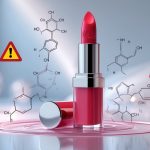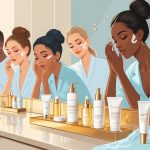Ingredient Lists on Serums Stylists Reveal Most Adults Read Wrong
Labels, Claims, and Certifications to Watch For
Everyone’s obsessed with “dermatologist-tested” and “clean” labels, but I watch people toss bottles in their carts without even glancing at the fine print. “Non-toxic” feels like a dare, not a promise. Certifications and buzzwords are everywhere, but honestly, most people (including me, apparently) have no clue what they mean or what to actually watch for. And yet, here I am, still reading those labels like they’ll finally make sense.
“Fragrance-Free”, “Hypoallergenic”, and “Clean” — Yeah, Right
Honestly, “fragrance-free” is just… not a real thing in the U.S. Nobody’s checking. I used to think it meant, like, zero scent, but brands just toss in “masking agents” and hope you won’t notice. I’m stuck scanning ingredient lists for “parfum” or whatever they call it now, usually buried at the bottom. Did you know—EWG says nearly 20% of “fragrance-free” stuff still sneaks in fragrance bits? I mean, why even bother? “Hypoallergenic” is even more meaningless. Some chemist at a panel told me, “Eh, it just means less likely to irritate. Doesn’t mean safe.” FDA doesn’t care, no rules, nobody tests. And “clean”? Please. It’s just a marketing word. Sometimes it means no parabens or SLS, other times it’s loaded with essential oils—great if you want a rash.
Here, just look at this mess:
| Claim | Regulated? | What It Really Means |
|---|---|---|
| Fragrance-Free | No | Supposedly no scent, but who knows |
| Hypoallergenic | No | Maybe less irritating, but not safe |
| Clean | No | Marketing nonsense, vague as ever |
So when someone tells me, “I finally found something clean!” I’m already bracing myself to hunt for hidden junk.
Non-Toxic, Dermatologist-Tested, and Whatever Else People Want
“Non-toxic” is everywhere now. No one can even define it. CDC? They don’t even bother. It’s just there to make you feel better about dropping $40 on a serum. Also, “dermatologist-tested”—that’s a joke. Just means someone slapped it on a patch of skin and didn’t scream. I interviewed a derm once who just rolled her eyes: “Brands never publish the bad results.” Still, people love that little badge, especially if they break out from, I don’t know, air.
Everyone’s got a preference. Some want everything FDA-approved (which isn’t a thing for serums in the U.S.), some go vegan, others avoid phenoxyethanol for reasons I still don’t get. Bottom line? Certifications are just there to make you feel better, not to actually protect your skin. Oh, and the definitions change by country. “Clean” in Seoul means cruelty-free, but in Paris it’s just “no four random synthetics.” Makes zero sense.
How I (Barely) Survive Reading Ingredient Lists
Nobody warned me how much time I’d waste staring at these lists. One second it’s “vitamin C serum,” next thing I know I’m googling “Aqua/Water/Eau” because, apparently, water needs three names. Ingredient order, list length, whatever—none of it’s clear.
Short vs. Long Ingredient Lists
People keep saying, “Shorter list = better.” Not true. Sometimes it’s just less stuff, sometimes it means nothing works. Dr. Zeichner (I think I read this on a blog at 2am?) says minimalist formulas can be less irritating, but not always better. I trashed a serum with nine ingredients once, only to learn three were just there for texture. Thanks, INCIDecoder, for making me feel dumb.
Here’s the deal: Top ingredients = more of that stuff. If your “active” is at #12, it’s probably just for show. Also, “free from” claims? Don’t trust them. You can have a short list and still get hosed if they skip stabilizers—vitamin C turns brown in a week. Is a three-ingredient serum safer? Nope. My friend broke out from a one-ingredient oil. Go figure.
Long lists are a pain, though, especially if you’re allergic to half the world. I made a spreadsheet once. Hated every minute.
Comparing Similar Serums—Why Bother?
Does anyone actually compare two serums with the same actives? I do, but I’m weird. The Ordinary’s Niacinamide vs. some random dupe—one swaps phenoxyethanol for ethylhexylglycerin. Does it matter? Not really, unless you’re allergic or obsessed with “clean” preservatives.
Why don’t more people check the vehicle (water, oil, silicone) first? That’s what actually changes how stuff absorbs. A chemist once told me, “Actives get all the glory, but the base does the work.” I learned that the hard way after three serums with identical actives—only one didn’t pill under sunscreen, thanks to a different gelling agent.
Counting actives is useless. Sometimes a preservative swap ruins your skin and you’ll never know why. Sodium benzoate hides under like six names. Still not sure what it does.
Tips From People Who Actually Know What They’re Talking About
Ever read a serum label and wonder, “Why is niacinamide before water?” I do. “Hydration booster” claims clinical results, but stylists and scientists just play detective, poking holes in marketing nonsense.
How to Read Ingredient Labels (Or Try To)
Skip to ingredient #4 or #5—if the good stuff isn’t up there, don’t expect results. Dermatologists keep saying this. Sometimes actives work at tiny amounts (like retinoids), but usually, if it’s at the end, it’s for decoration.
Marketing loves “patented peptide complex” type jargon. I’ve seen phenoxyethanol called a “nourishing emulsifier.” Why? Who knows. Stylists tell me: trust boring, proven ingredients (niacinamide, glycerin, ceramides).
Myths That Need to Die
Retinoids: OTC versions actually work. Not just prescriptions. My esthetician friend laughs at vitamin E for scars—“Old wives’ tale.” “All-natural” is a joke, too. Poison ivy is natural. I’m not smearing it on my face.
Long lists aren’t always bad. Sometimes extras help buffer or stabilize. And hyaluronic acid? Only works if the air isn’t dry. Otherwise, your skin just gets tighter.
What Experts Actually Say About Safety
I watched a stylist panic after realizing “fragrance” can mean anything. Scientists hate this. Dr. Ejikeme says serums should protect, not just look pretty. She likes niacinamide and vitamin C, says don’t trust pretty fonts, and only exfoliate once a week. Good luck remembering that.
People think trace ingredients don’t matter. Wrong. Allergens can nuke your skin at microdoses. I keep a spreadsheet just for preservatives—formaldehyde releasers are sneaky. “Paraben-free” means nothing unless you check what they used instead. Patch test or prepare for a bad skin week.



